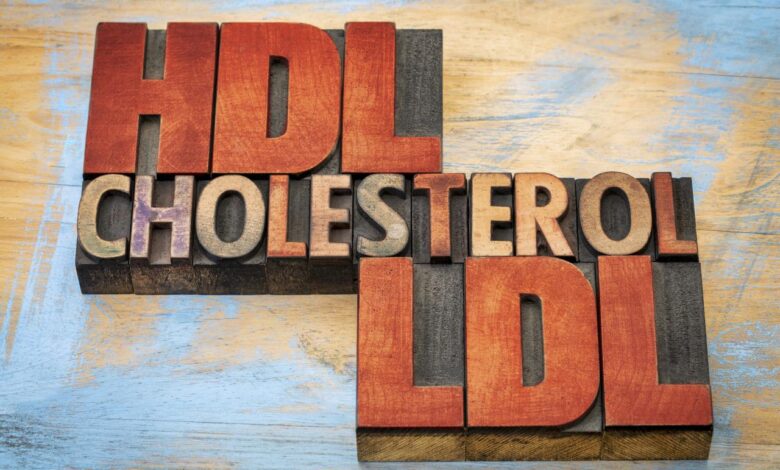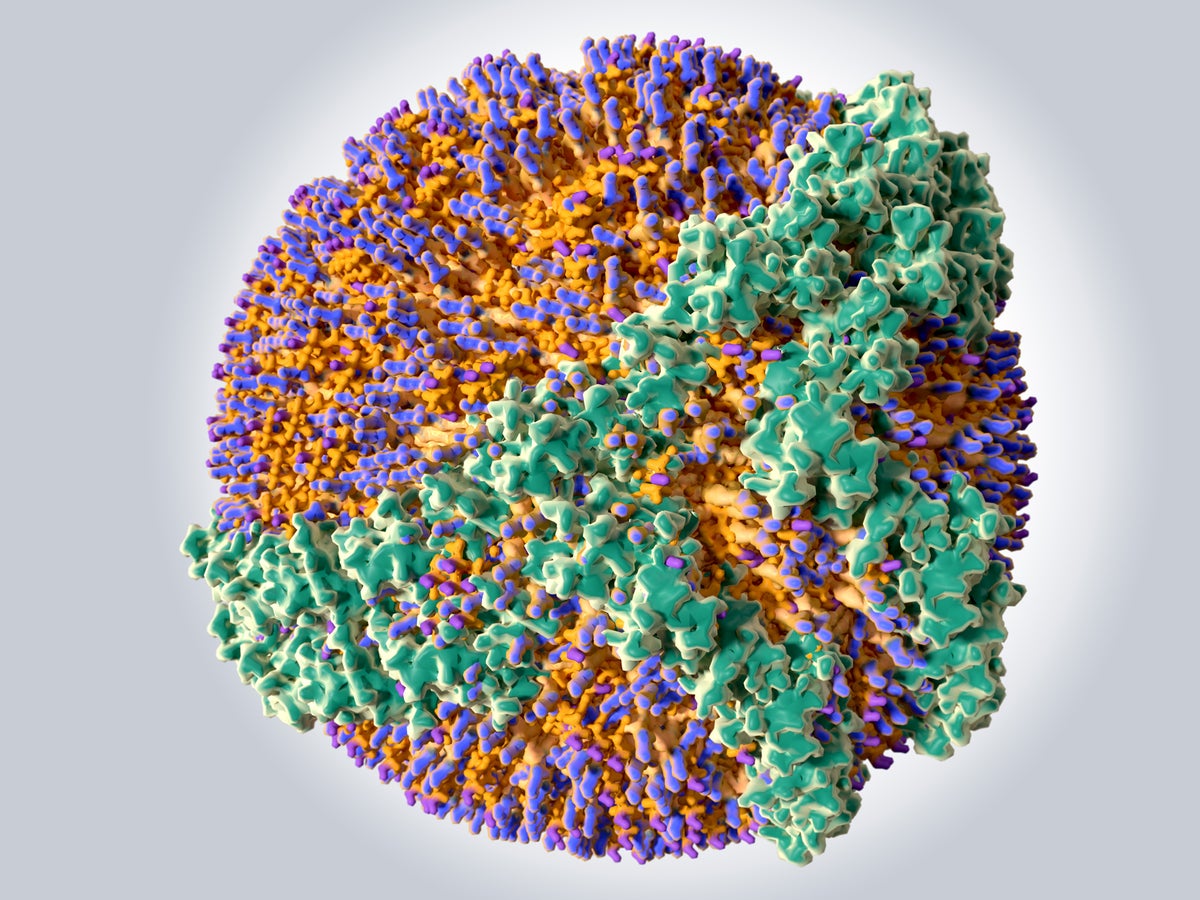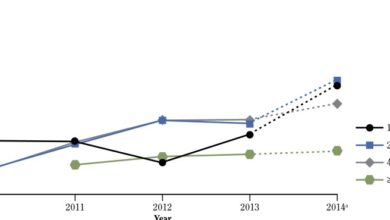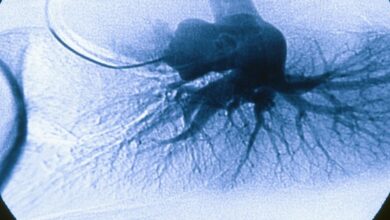
High HDL health dangers are a complex issue, often misunderstood. While high HDL cholesterol is generally considered good, recent research suggests it might not always be beneficial, even potentially harmful in certain cases. This exploration delves into the potential risks associated with elevated HDL levels, examining their impact on cardiovascular health and other aspects of well-being.
This article provides a comprehensive overview of high HDL cholesterol, exploring its physiological role, potential health risks, contributing factors, management strategies, and differentiation from other conditions. We’ll also examine how high HDL levels might affect different demographics, analyzing case studies and providing practical insights.
High HDL Levels
High cholesterol is often discussed in terms of “bad” LDL and “good” HDL. While high LDL is generally a concern, high HDL levels, while less common, also warrant attention. This discussion delves into the specifics of high HDL cholesterol, its implications, and how it’s measured.High HDL cholesterol, often referred to as “good” cholesterol, plays a crucial role in maintaining cardiovascular health.
However, exceptionally high levels, while seemingly beneficial, can present unique considerations. Understanding the intricacies of this phenomenon is key to interpreting blood test results and making informed health decisions.
Overview of High HDL Cholesterol Levels
HDL cholesterol, or high-density lipoprotein, is a type of fat-like substance in the blood that helps remove excess cholesterol from the arteries. It essentially carries cholesterol away from the body’s tissues and back to the liver for processing and elimination. A healthy HDL level acts as a protective mechanism against atherosclerosis, a condition where plaque builds up in the arteries.
Typical Range of Healthy HDL Cholesterol Levels
The optimal range for HDL cholesterol varies slightly depending on factors like age and sex. Generally, levels above 60 mg/dL are considered desirable. However, the overall health picture, including lifestyle factors and other blood lipid levels, should always be considered.
Physiological Role of HDL Cholesterol
HDL cholesterol’s primary function is reverse cholesterol transport. This process efficiently removes excess cholesterol from peripheral tissues, preventing its accumulation in the arteries. High levels of HDL are associated with a lower risk of heart disease. Importantly, while high HDL is generally considered positive, extreme elevations might warrant further investigation.
Measuring High HDL Levels
High HDL levels are typically detected through a simple blood test, often part of a routine lipid panel. This test measures the concentration of various types of cholesterol, including HDL, in a blood sample. The test is usually performed after a period of fasting. A doctor will interpret the results in the context of overall health. Fasting requirements and other test considerations should be confirmed with the medical professional.
Common Symptoms Associated with High HDL Cholesterol
High HDL cholesterol itself rarely presents with noticeable symptoms. The absence of symptoms underscores the importance of regular check-ups and monitoring blood lipid levels, particularly for individuals with known risk factors for cardiovascular disease. A thorough medical evaluation is crucial to assess the potential underlying causes of elevated HDL levels and determine any necessary interventions.
Potential Health Risks of Elevated HDL

High HDL cholesterol, often lauded as “good” cholesterol, is typically associated with cardiovascular health benefits. However, exceptionally high levels may, in some cases, pose unexpected health risks. Understanding these potential risks is crucial for maintaining optimal health and preventing potential complications.Elevated HDL levels, while generally beneficial, can sometimes be a marker of underlying conditions or potentially interact with other factors to create a complex health picture.
This article will delve into the potential downsides of persistently high HDL, contrasting it with the implications of low HDL levels, and exploring potential interactions with other health conditions.
Potential Health Concerns Linked to High HDL Levels
High HDL levels, while generally positive, can sometimes be associated with various health concerns. These concerns stem from the complexities of the human body and the potential for imbalances in various systems.
- Potential for reduced effectiveness of some medications: Some medications may not work as effectively when HDL levels are exceptionally high. For instance, certain drugs designed to improve blood lipid profiles might see diminished results, or have a heightened risk of side effects. This requires careful monitoring and adjustment of medication regimens by medical professionals.
- Interactions with other health conditions: High HDL levels might interact unfavorably with existing health conditions. For example, in individuals with certain genetic predispositions or those experiencing certain inflammatory conditions, high HDL could potentially exacerbate or mask underlying issues. Careful monitoring and assessment of individual circumstances are vital.
- Possible link to certain cancers: Some research suggests a potential correlation between very high HDL levels and an increased risk of specific types of cancers. However, more research is needed to fully understand the nature and extent of this relationship, and to ascertain if this correlation is causal or merely a statistical association.
Comparison with Low HDL Levels
Understanding the implications of high HDL requires a comparison with low HDL levels, which are known to be detrimental to cardiovascular health. While both extremes can impact cardiovascular health, the mechanisms and consequences differ significantly.
- High HDL vs. Low HDL in Cardiovascular Health: Low HDL is strongly linked to increased risk of cardiovascular diseases, including heart attacks and strokes. High HDL, on the other hand, while generally beneficial, might, in specific cases, be linked to other health concerns, such as those mentioned previously.
- Distinct Mechanisms: Low HDL often results in a buildup of harmful LDL cholesterol, leading to plaque formation in arteries. High HDL, in contrast, is generally associated with reduced risk of plaque formation. However, high HDL could potentially affect other physiological processes in a way that’s not fully understood.
Potential Interactions with Other Health Conditions
High HDL levels can potentially interact with various health conditions, adding complexity to the overall health picture.
High HDL levels, while often touted as a good thing for heart health, can sometimes be a red flag. It’s a complex issue, and sometimes, even seemingly positive factors can have hidden downsides. For example, the recent Olympic figure skating scandal involving a banned drug highlights the lengths some athletes will go to achieve peak performance, even if it compromises their long-term health.
Learning more about this controversial situation can provide a valuable perspective on the potential dangers of pushing physical limits beyond safe boundaries, just as understanding the potential risks of high HDL levels requires careful consideration of the specific individual and their health profile. olympic figure skating scandal what to know about the banned drug. Ultimately, a balanced approach to health, considering all the nuances, is key to navigating these often-confusing issues.
- Underlying Causes of Elevated HDL: High HDL levels can be linked to genetic predispositions, certain medications, or specific medical conditions. Understanding the root cause of elevated HDL is crucial for determining appropriate management strategies.
- Examples of Potential Interactions: High HDL might exacerbate or mask the symptoms of certain conditions like liver disease, autoimmune disorders, or genetic metabolic syndromes. It’s essential to consider these potential interactions when interpreting HDL levels within the broader context of an individual’s health.
Existing Research and Studies on High HDL and Associated Risks
Ongoing research is essential to fully understand the complex relationship between high HDL and potential health risks. Current studies are exploring the various mechanisms through which high HDL might contribute to these risks.
- Limitations of Existing Research: Many studies on high HDL and associated risks are still in their early stages. More extensive and long-term research is needed to establish clear causal relationships and fully understand the clinical implications of high HDL levels.
- Ongoing Research Areas: Researchers are actively investigating the interplay between high HDL, inflammation, oxidative stress, and other biological processes. These investigations aim to identify potential mechanisms that could explain the potential link between high HDL and certain health concerns.
Possible Underlying Causes for Elevated HDL Levels
Numerous factors can contribute to high HDL cholesterol levels. Identifying the underlying cause is essential for developing appropriate management strategies.
- Genetic Factors: Certain genetic predispositions can influence HDL levels. Family history of high HDL levels is a factor to consider.
- Medications: Some medications, such as certain statins, can impact HDL levels, sometimes causing an increase. The specific impact on HDL needs to be carefully considered by physicians.
- Dietary Factors: Specific dietary patterns can influence HDL levels. A diet rich in certain nutrients or with certain nutritional deficiencies may play a role.
Factors Contributing to High HDL: High Hdl Health Dangers
High HDL cholesterol levels, while often associated with a healthy cardiovascular system, can sometimes present unexpected health concerns. Understanding the factors that influence HDL levels is crucial for proactive health management. This section explores the various lifestyle and genetic components that contribute to elevated HDL cholesterol, helping you gain a clearer picture of this complex issue.Elevated HDL levels are not always a positive sign.
While high HDL is often linked to a reduced risk of heart disease, certain conditions or factors can lead to a significantly higher level than is optimal for overall health. The focus here is on the lifestyle and genetic aspects that contribute to this situation.
Lifestyle Factors Affecting HDL Levels
Several lifestyle choices significantly impact HDL cholesterol levels. A balanced approach encompassing diet, exercise, and stress management plays a vital role in maintaining optimal levels. These choices can influence the body’s production and utilization of HDL, affecting its overall function.
- Diet: A diet rich in certain fats and antioxidants can influence HDL production. A balanced diet that includes unsaturated fats, like those found in avocados and nuts, may positively affect HDL levels. Foods rich in antioxidants, such as fruits and vegetables, also play a role. Excessive consumption of saturated and trans fats, however, can negatively impact HDL levels.
- Exercise: Regular physical activity can positively influence HDL levels. Aerobic exercise, such as running or cycling, is particularly effective in increasing HDL cholesterol. The impact of exercise on HDL cholesterol is often related to its overall effect on cardiovascular health.
- Stress Management: Chronic stress can negatively affect HDL levels. Stress management techniques, such as meditation or yoga, may help improve HDL cholesterol levels by reducing stress hormones.
Dietary Influences on HDL
Different dietary approaches can impact HDL levels in varying ways. The types of fats, fiber, and antioxidants consumed can influence the body’s ability to produce and utilize HDL cholesterol.
| Dietary Approach | Potential Impact on HDL | Explanation |
|---|---|---|
| Mediterranean Diet | Positive | Rich in fruits, vegetables, whole grains, and healthy fats, the Mediterranean diet promotes overall cardiovascular health, often leading to improved HDL levels. |
| Low-Fat Diet | Potentially negative | While beneficial for weight management, restrictive low-fat diets can sometimes reduce HDL levels if not properly balanced. |
| High-Protein Diet | Variable | The impact of a high-protein diet on HDL levels can vary depending on the specific protein sources and overall dietary pattern. |
Genetics and HDL Levels
Genetic predisposition plays a significant role in determining an individual’s HDL cholesterol levels. Certain genes influence the body’s ability to produce and utilize HDL cholesterol. Inherited genetic variations can significantly impact the effectiveness of lifestyle interventions aimed at modifying HDL levels. For example, individuals with a family history of high HDL may be more likely to have higher levels, regardless of their lifestyle choices.
Other Factors
Besides diet, exercise, and genetics, other factors can contribute to high HDL cholesterol levels. Factors like age, gender, and certain medications can also influence HDL levels.
- Age: HDL levels can change throughout a person’s life. Older age can sometimes be associated with higher HDL levels.
- Gender: Generally, women tend to have higher HDL levels than men.
- Medications: Some medications can influence HDL levels, either positively or negatively.
Managing High HDL
High HDL levels, while generally considered beneficial for cardiovascular health, can sometimes present unexpected challenges. Understanding how to manage elevated HDL levels is crucial for maintaining overall well-being and mitigating potential risks. This section delves into strategies for managing high HDL levels, emphasizing the importance of lifestyle modifications and potential medical interventions.Elevated HDL levels, though not typically a cause for immediate concern in the same way as low HDL levels, require careful consideration.
While high HDL levels might seem positive, certain conditions or factors can lead to potentially adverse effects. Effective management involves a multifaceted approach, encompassing lifestyle adjustments and, in some cases, medical interventions.
Lifestyle Modifications
Maintaining a healthy lifestyle is fundamental in managing high HDL levels. The focus should be on comprehensive changes rather than isolated interventions. These changes can positively influence various physiological processes, potentially mitigating the impact of elevated HDL levels.
- Dietary Modifications: A balanced diet plays a crucial role in managing HDL levels. Reducing saturated and trans fats, increasing soluble fiber intake, and consuming a variety of fruits and vegetables can significantly impact lipid profiles. Foods rich in omega-3 fatty acids, found in fatty fish like salmon and mackerel, can also be beneficial.
- Exercise Routines: Regular physical activity is essential for overall health and can influence HDL levels. Aerobic exercise, such as brisk walking, jogging, or cycling, can help maintain a healthy weight and potentially contribute to favorable changes in lipid profiles. Strength training can also be beneficial, enhancing overall fitness and contributing to a healthier lipid balance.
- Stress Management Techniques: Chronic stress can negatively impact various physiological systems, including lipid metabolism. Implementing stress-reduction techniques, such as yoga, meditation, or deep breathing exercises, can contribute to better overall health and potentially influence HDL levels indirectly.
Medical Interventions, High hdl health dangers
In some cases, lifestyle modifications alone might not be sufficient to manage high HDL levels. Medical interventions, when deemed necessary by a healthcare professional, can be considered. These interventions should always be discussed and implemented under the guidance of a qualified medical expert.
- Pharmacological Treatments: Certain medications can influence lipid profiles. However, the decision to use medications to manage high HDL levels should be carefully considered, as potential side effects and risks need to be weighed against the benefits. A healthcare provider can determine the appropriateness and safety of pharmacological interventions.
Comparative Analysis of Management Strategies
| Strategy | Description | Potential Benefits | Potential Drawbacks |
|---|---|---|---|
| Dietary Modifications | Adjusting food choices to reduce saturated/trans fats, increase fiber, and incorporate healthy fats. | Improved overall health, potentially lowering other risk factors. | Requires significant lifestyle change, potentially challenging to maintain. |
| Exercise Routines | Regular physical activity, including aerobic and strength training. | Improved cardiovascular health, weight management, and potential impact on lipid profiles. | Requires commitment and consistent effort. |
| Stress Management Techniques | Practicing yoga, meditation, or deep breathing exercises. | Reduced stress levels, potential positive impact on overall health. | Requires consistent practice and may not be effective for all individuals. |
| Pharmacological Treatments | Using medications to influence lipid profiles. | Potential for significant improvement in lipid levels. | Potential side effects, requires careful monitoring, and should only be used under medical supervision. |
Differentiating High HDL from Other Conditions
High HDL cholesterol, while often considered beneficial, can sometimes be a marker for underlying conditions. Accurate diagnosis is crucial to distinguish high HDL from other lipid disorders and to ensure appropriate management. Understanding the subtle differences between elevated HDL and other lipid profiles is vital for effective treatment and preventing potential complications.
Distinguishing High HDL from Other Lipid Disorders
Differentiating high HDL from other lipid disorders requires a comprehensive evaluation. Elevated HDL cholesterol levels are often observed in conjunction with other lipid parameters. High HDL levels, while generally positive, may sometimes be a sign of a compensatory mechanism for underlying metabolic issues or genetic predispositions.
Comparison of High HDL with Other Lipid Disorders
A crucial aspect of distinguishing high HDL is comparing it to other lipid disorders, such as low HDL, high LDL, and high triglycerides. While high HDL is often associated with a reduced risk of heart disease, the presence of other lipid abnormalities can significantly alter this picture. For example, an individual with high HDL but also high LDL could still be at a considerable risk of cardiovascular disease.
This highlights the importance of considering the full lipid profile when assessing overall cardiovascular health.
Symptoms and Diagnostic Procedures
Typically, high HDL levels do not present with noticeable symptoms. The diagnosis relies primarily on laboratory tests, specifically lipid panels. A lipid panel measures various lipid components, including HDL, LDL, triglycerides, and total cholesterol. These tests are conducted by collecting a blood sample and analyzing its lipid composition. The results, when interpreted alongside other relevant clinical data, provide a more complete picture of the patient’s lipid profile.
Factors like diet, exercise, and medical history are considered when interpreting the lipid panel. Further investigations might be necessary if other conditions are suspected.
Importance of Accurate Diagnosis in Managing High HDL
Accurate diagnosis is essential for appropriate management of high HDL. Misinterpreting high HDL as a purely beneficial factor could lead to neglecting other underlying conditions or risks. This can result in delayed interventions and potentially increase the risk of developing related health problems. For instance, a patient with high HDL but also undiagnosed diabetes could experience complications from both conditions.
While high HDL levels are often touted as a good thing for heart health, the reality is a bit more nuanced. A healthy gut plays a crucial role in overall cardiovascular well-being, and understanding those connections is key. For instance, did you know that a balanced microbiome can influence cholesterol levels and even blood pressure? Check out this insightful article on 3 ways healthy gut impacts heart health to learn more about the fascinating link.
So, while high HDL might seem beneficial, it’s essential to consider the broader picture of gut health to truly understand heart health risks and overall well-being.
Table Comparing High HDL and Other Lipid Disorders
| Characteristic | High HDL | Low HDL | High LDL | High Triglycerides |
|---|---|---|---|---|
| Symptoms | Usually asymptomatic | Usually asymptomatic; may be associated with increased risk of heart disease. | Usually asymptomatic; may be associated with increased risk of heart disease. | Usually asymptomatic; may be associated with increased risk of pancreatitis. |
| Risk Factors | Genetics, certain medications, vigorous exercise, and a healthy lifestyle. | Genetics, smoking, lack of exercise, obesity, and unhealthy diet. | Genetics, unhealthy diet, lack of exercise, smoking, and obesity. | Genetics, unhealthy diet, lack of exercise, alcohol consumption, and obesity. |
| Treatment Options | Focus on maintaining a healthy lifestyle, managing underlying conditions if present. | Lifestyle changes (diet, exercise, smoking cessation), medication (statins). | Lifestyle changes, medication (statins, other lipid-lowering drugs). | Lifestyle changes, medication (fibrates, niacin), and potentially addressing underlying conditions. |
Illustrative Case Studies
High HDL levels, while often considered beneficial, can sometimes present unexpected challenges. Understanding these complexities through real-world case studies is crucial for healthcare professionals and individuals alike. These examples highlight the importance of thorough evaluation and personalized management strategies.
Case Study 1: A Patient with High HDL and Unexpected Cardiovascular Events
A 55-year-old male patient, Mr. Smith, presented with a consistently high HDL level of 80 mg/dL, a figure generally considered healthy. His medical history was unremarkable, and he reported no symptoms other than mild fatigue. Routine blood tests revealed normal cholesterol levels, triglycerides, and other relevant biomarkers. He was advised to maintain his healthy lifestyle.
However, despite this, Mr. Smith experienced three episodes of chest pain, each progressively worsening. Cardiac stress tests revealed significant coronary artery disease. Further investigation showed that, despite the high HDL, Mr. Smith had a genetic predisposition to a specific type of atherosclerosis, a condition not fully accounted for by HDL levels alone.
This illustrates the point that high HDL levels do not automatically guarantee cardiovascular protection. The case highlights the importance of considering a patient’s full medical history and genetic predispositions, rather than relying solely on one biomarker.
Case Study 2: Delayed Diagnosis and the Importance of Early Intervention
Ms. Chen, a 40-year-old female, presented with a gradually increasing high HDL level of 95 mg/dL. Her initial blood tests showed no other significant abnormalities. She attributed the elevated HDL to her healthy diet and regular exercise routine. She delayed seeking further medical advice for several months.
Unfortunately, her elevated HDL was masking underlying inflammatory processes that were progressively damaging her blood vessels. By the time she sought medical attention, she had developed significant peripheral artery disease, requiring intervention. This case study demonstrates the importance of timely medical intervention. While high HDL is often viewed positively, it should not be taken as a complete safeguard against cardiovascular complications.
Early detection and appropriate medical management can prevent the development of severe conditions.
Case Study 3: Complications Arising from High HDL Levels
A 60-year-old female patient, Mrs. Garcia, had high HDL levels of 110 mg/dL for many years. She reported no particular symptoms and maintained a healthy lifestyle. Her routine check-ups showed consistently elevated HDL, but other lipid parameters remained within normal ranges. However, during a routine checkup, she was found to have developed a form of pancreatitis.
High HDL levels, while often touted as a good thing for heart health, can sometimes hide underlying issues. Recent news about the UK’s change in birth control pill recommendations, where women are no longer expected to have a period while on the pill uk no longer recommending women get period while on birth control pills , highlights the complex interplay between hormones and overall well-being.
It’s important to remember that high HDL alone isn’t a guarantee of good health and further investigation might be necessary to fully understand potential risks.
Further investigation revealed that the high HDL levels, while not directly causing the pancreatitis, had created an environment that made her more susceptible to this condition. This case study underscores the fact that a high HDL level can sometimes be an indicator of an underlying condition or a predisposition to other issues. It also stresses the need for a comprehensive assessment of the entire lipid profile, not just the HDL value, when evaluating a patient’s health.
High HDL and Specific Populations
High HDL cholesterol, while generally associated with a reduced risk of heart disease, isn’t a one-size-fits-all scenario. The impact of elevated HDL levels can vary significantly across different demographic groups, including age, gender, and ethnicity. Understanding these variations is crucial for personalized health recommendations. This section will explore how high HDL levels may affect different populations and potential disparities in experience.High HDL levels, while often beneficial, can present unique challenges and require careful consideration when evaluated in specific demographics.
Factors like genetic predisposition, lifestyle choices, and pre-existing health conditions can influence how high HDL levels manifest and interact with overall health in diverse groups.
Age-Related Effects of High HDL
High HDL levels in younger individuals, while generally positive, may require monitoring due to the potential for an underlying condition. Conversely, high HDL in older adults might present different considerations. Age-related physiological changes and co-morbidities can influence the interpretation of high HDL levels. Careful assessment is necessary to ensure the appropriate management strategies are implemented.
Gender-Specific Considerations
Gender differences in HDL levels and their implications for health are well-documented. Women and men often have different baseline HDL levels, and these levels can fluctuate throughout life. Understanding these differences and their potential effects on health is essential for personalized healthcare. Furthermore, the impact of hormonal changes on HDL levels, such as during pregnancy or menopause, must be considered.
High HDL Across Ethnicities
Genetic variations among different ethnic groups can influence HDL levels. Recognizing these variations is crucial for providing accurate and tailored recommendations. High HDL levels in certain ethnic groups might present different health implications, requiring a deeper understanding of the associated factors.
Demographic Variations in High HDL Levels and Health Concerns
| Demographic Group | Potential High HDL Level Effects | Health Concerns |
|---|---|---|
| Young Adults (18-35) | May indicate an underlying condition requiring further investigation. | Potential for undiagnosed conditions. |
| Middle-Aged Adults (36-55) | Generally considered beneficial, but individual factors need consideration. | Potential for interactions with other health conditions. |
| Older Adults (56+) | May be associated with various factors, including medications. | Potential interactions with age-related conditions. |
| Women | Fluctuating levels throughout life cycle, influenced by hormonal changes. | Need for individualized monitoring and management. |
| Men | Baseline levels often differ from women, potential for unique interactions. | Potential for interactions with other health conditions. |
| Specific Ethnic Groups | Genetic predispositions can influence HDL levels. | Need for culturally sensitive and personalized healthcare. |
End of Discussion

In conclusion, while high HDL cholesterol is often associated with heart health, the potential dangers of consistently elevated levels should not be ignored. Understanding the potential risks, contributing factors, and management strategies is crucial for maintaining overall well-being. The information presented here is intended for educational purposes only and should not be considered medical advice. Consult with a healthcare professional for personalized guidance.





